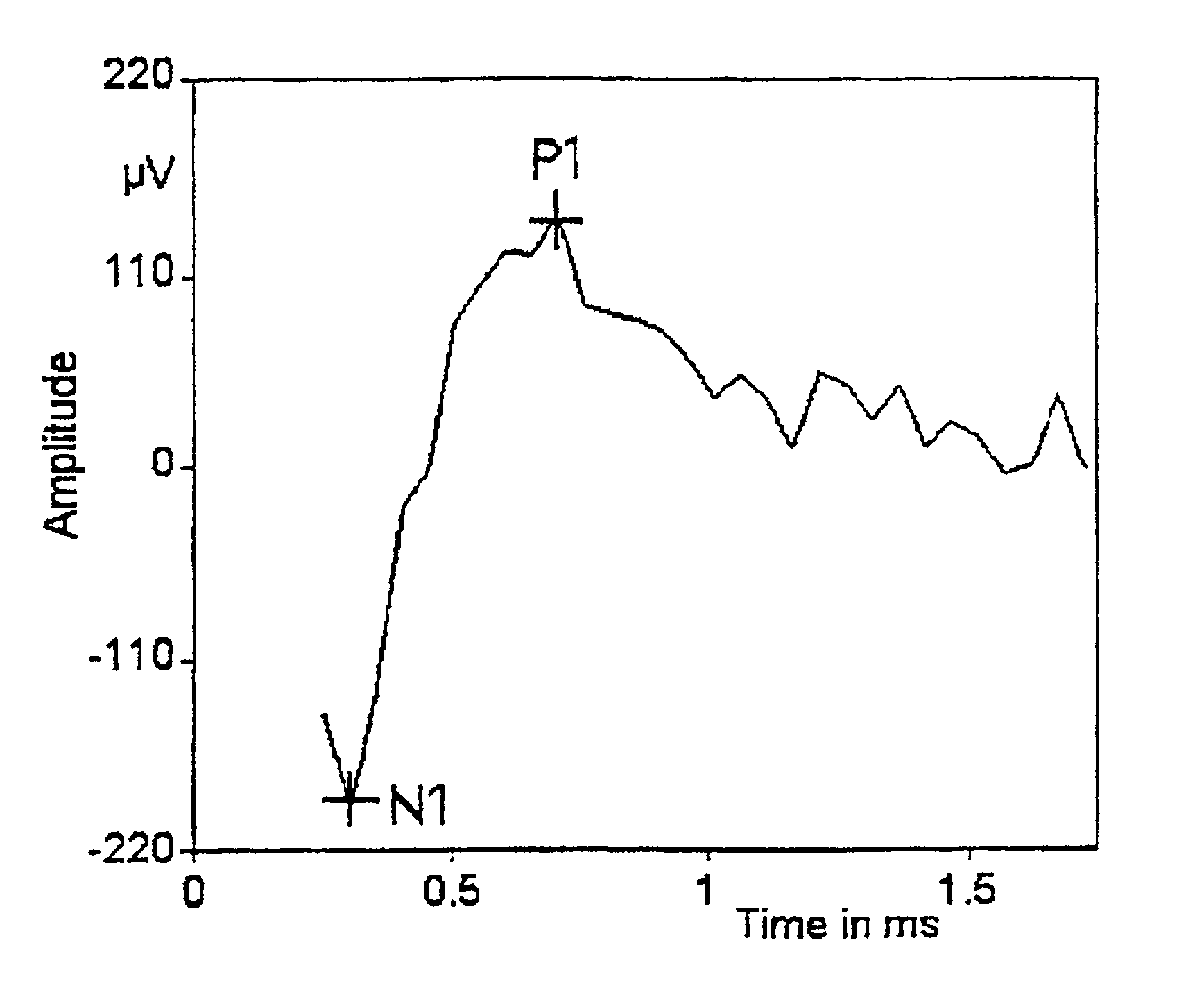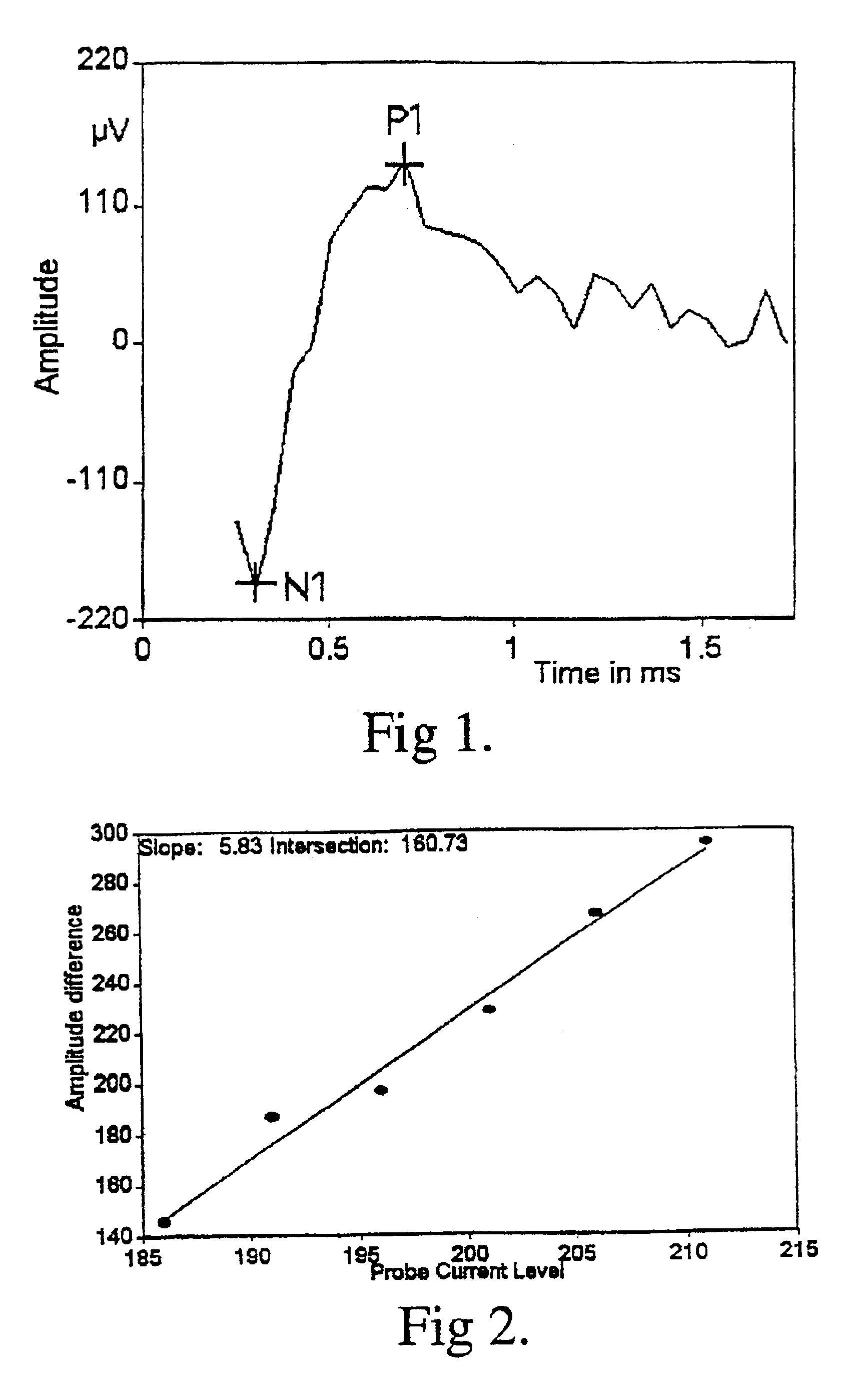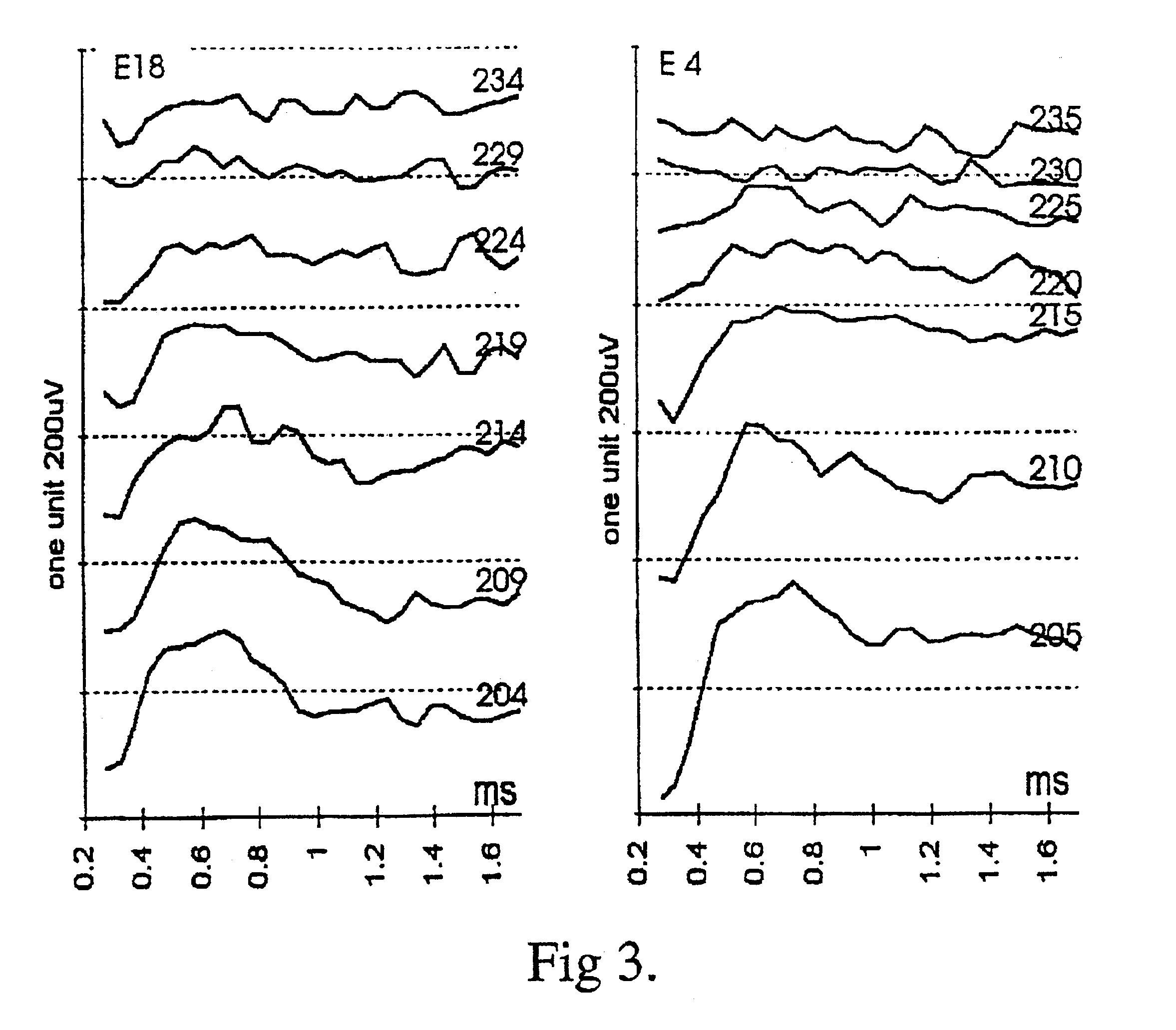Optimizing cochlear implant electrode selection
a cochlear implant and electrode selection technology, applied in the field of optimizing the selection of electrodes, can solve the problems of not being able to readily indicate an improvement or decrease in the quality of hearing perception, present approach does not readily lend itself to automation, etc., and achieve the effect of increasing stimulus level and amplitude of neural respons
- Summary
- Abstract
- Description
- Claims
- Application Information
AI Technical Summary
Benefits of technology
Problems solved by technology
Method used
Image
Examples
example
[0030]The following example illustrates how the technique of the present invention can be implemented in real patent situations.
[0031]Two German speaking patients with more than one year CI-experience and good performance were recruited for this study. Subject profiles are summarized In the following table.
[0032]
Subject ProfilesSubject initialsWWEKGendermalefemaleAge (years)7238Aetiologyprogressiveprogressive
[0033]Both subjects use the body worn SPrint™ speech processor, and were tuned up with SPEAK™ speech processing strategy. Six months prior to this experiment, both were converted to ACE™ speech processing strategy. Previous to the study described here, the subjects had not been exposed to a CIS coding strategy.
[0034]NRT™ measurements were recorded using electrodes 20 to one as the stimulating electrode pair, with the recording electrode spaced two electrodes apart, apically from the stimulation site. The NRT™-software version 2.04 developed at the ENT Department of the Universit...
PUM
 Login to View More
Login to View More Abstract
Description
Claims
Application Information
 Login to View More
Login to View More - R&D
- Intellectual Property
- Life Sciences
- Materials
- Tech Scout
- Unparalleled Data Quality
- Higher Quality Content
- 60% Fewer Hallucinations
Browse by: Latest US Patents, China's latest patents, Technical Efficacy Thesaurus, Application Domain, Technology Topic, Popular Technical Reports.
© 2025 PatSnap. All rights reserved.Legal|Privacy policy|Modern Slavery Act Transparency Statement|Sitemap|About US| Contact US: help@patsnap.com



